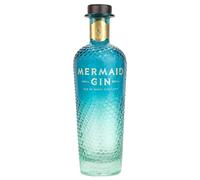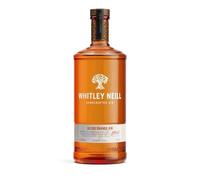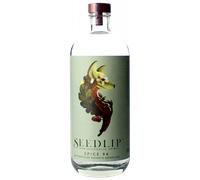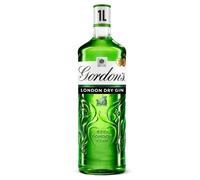Note: This text was created with the help of AI.








































- 1
- 2
- 3
- 4
- 5
- next page
Discover the Best Offers for Gin
As a rule, gin consists of neutral alcohol of agricultural origin. For this, a mash of grain (barley or corn) or molasses (sugar beets) must be produced and brought to fermentation. This fermentation process takes place in stills, which produces high-proof alcohol. Different fruit and spice flavors are then added to give the gin a unique taste.
For this process, distillers can choose between two methods: Maceration followed by distillation or distillation with aroma addition.
In the first method, the fruit and spice flavors are infused into the high-proof alcohol, which draws out the flavors and colorings. The liquid must then be filtered and distilled. This process is called maceration.
Furthermore, it is possible to distill the alcohol and pass the resulting alcohol vapor through the ingredients. In this way, the alcohol also absorbs the aromas. This method is called distillation with aroma addition.
Gin can be divided into three different types based on its production, origin or composition: official types, geographical types and unofficial types.
The production of official varieties is regulated by law. Only if the producers adhere to these regulations, they are allowed to name the gin accordingly.
Gin varieties with a geographical background are a speciality. Here it is not the production process that is important, but explicitly the origin.
Unofficial gin varieties leave the producers plenty of room for experimentation, as they are not subject to any official specifications. This often results in unusual creations with even more unusual flavours.
Gin has an alcohol content of at least 37.5 percent by volume. If this is not the case, as for example with Monkey 47, it is rather a liqueur. In general, however, gin has a higher alcohol content. This is mainly a sign of quality differences among the many gin varieties.
Botanicals are basically the ingredients that are added to the gin during the production and distillation process.
A gin never consists of only one ingredient, but always has several botanicals. Usually these are different herbs, spices, fruits or even vegetables.
Basically, you can recognize a good gin by the fact that its production is regulated by an EU regulation. This sets down certain guidelines that regulate the flavouring with natural and nature-identical substances as well as the use of sugar. In addition, gin must have an alcohol content of at least 37.5 percent by volume.
Furthermore, there are three quality categories by which you can recognise a good gin:
- Distilled Gin.
- London Dry Gin.
- Dry Gin.
Distilled gin has its origin in agriculture, i.e. it belongs to the so-called agricultural alcohol, and is distilled twice with juniper berries and other vegetable substances. The resulting distillates may be mixed with other natural or nature-identical substances.
London Dry Gin is a sub-category of distilled gin, but is subject to stricter conditions during production: the alcohol may only be distilled once and only water may be added afterwards. In addition, it may only have 0.1 grams of sugar per liter, which is why it bears the addition "Dry".
Another quality feature is the designation Dry Gin. With this gin, the addition of sugar is not allowed.
However, more and more producers are doing without the above-mentioned designations, as you can now get gin bottles with the quality characteristics for less than five euros at discount stores. For this reason, gin producers prefer the regional location as a quality feature.
But the most decisive quality feature is still the taste. As soon as you like a certain gin, don't pay attention to EU regulations or the like, because in the end, taste is still the only thing that counts.
Absolutely and, in our opinion, you should. At the very least, you need to taste it neat before drinking it as a long drink or cocktail. By tasting it neat, you can learn a lot about how you would prefer to drink it later.
Drinking a gin neat shouldn't be done lightly, though. It's best to use a nosing glass for this. Because of its special shape - bulbous lower part and tapered sides - the different nuances of taste really come into their own.
The classic is certainly tonic water, which creates the popular gin and tonic. Meanwhile, this mixture is "THE" absolute trendy drink in many bars. You can combine this tonic mixture with a slice of cucumber, lemon or orange, depending on the flavour of the gin, and of course with ice.
Another popular mixed drink is Bitter Lemon. Especially in summer, many people enjoy the Gin Lemon. You also garnish this drink with a lemon.
We also recommend the Gin Rickey. Here you mix gin with some sugar syrup, lime juice, tonic and add ice cubes. Finally, add one or two lime wedges to the glass.
Last but not least, I suggest you try James Bond's favorite drink, the Dry Martini. To make this classic, you'll need ice cubes, Martini Dry (vermouth) and gin.
First you put ice cubes in a shaker, add the Martini Dry and shake the whole thing. Now pour the mixture into a chilled glass. Then pour the gin into the shaker, which still contains the ice from the Martini. Shake the shaker until it feels cold. Now pour the gin into the same glass, but without the ice - the Dry Martini is ready.
This question is in any case not so easy to answer, because in the end it always depends on the fact that the mixture tastes good.
Basically, I can tell you: The more bitter the tonic, the stronger the gin should be. Otherwise you will only taste the tonic. Means, as soon as a gin with many botanicals was produced, it is worthwhile to use a quite bitter tonic.
This depends on whether you want to enjoy it neat, as a long drink or as a cocktail.
For pure enjoyment, we advise you to use a nosing glass. It's best to have the glass in the fridge for some time beforehand, so that it's already cold per se. However, the gin should not be chilled, but at room temperature.
If you like to drink gin "on the rocks", i.e. with ice, you can do so without any problems. However, you should use a tumbler as a glass. As a rule, you can't fit an ice cube in a nosing glass. However, we have to tell you that ice does take away from the flavor of the gin a bit.
Serving a gin long drink is quite simple. Again, we recommend you chill the glass first and then mix the long drink. To do this, put a few ice cubes in the glass, squeeze in a few slices of fruit and pour the mixed drink of your choice over it. Finally, throw the fruit slices into the glass and the gin long drink is ready.
Mixing a gin cocktail is similar, except that it is often served with either a garnish or additional flavour enhancers.
The simplest cocktail is probably the Tom Collins, which you make with sugar syrup, lemon juice, soda and ice. This is followed by the Gin Fizz, where you mix the aforementioned ingredients in a shaker, pour them into a glass and top it up with soda water. The difference to the Tom Collins is the lack of ice. Furthermore, the Basil Smash is a very popular gin cocktail, which is mixed with basil.
Gin cocktails and gin long drinks are best served in a tall long drink glass. If you are not a fan of dry martinis, we recommend a cocktail glass. This glass has a long stem and an opening that widens towards the top. However, there are also some gin creations that are served in a copper mug. This is to keep the temperature of the drink low for a long time. The copper has no influence on the taste.
Alternatively, you can also offer gin as an aperitif. This is often a nice introduction to a social gathering with a delicious menu, as the gin whets the appetite for the meal and also loosens up the company a little.
In theory, gin can be stored indefinitely. As a rule, gin has a minimum alcohol content of 37.5% by volume and therefore does not require a use-by date, according to the Food Labelling Ordinance.
However, this only applies to alcoholic beverages that have an alcohol content of over ten percent by volume. For gin, this means that no spoilage germs can form and that a long storage time does not have any adverse effects on health.
Nevertheless, gin that has been open for years can lose a lot of its flavour. The reason for this is oxygen, which leads to oxidation and evaporation of the alcohol and the aromas. However, this does not happen in a few days, but usually takes several months or years. However, if you have many gin bottles open, this can become a problem at some point.
Discover the Best Offers for Gin
Gin enthusiasts will be thrilled to explore the wide variety of options available on pricehunter.co.uk. Whether you're searching for a classic London dry gin or a unique craft variation, our platform helps you compare prices from various retailers so you can find the perfect bottle for your next gathering or a quiet evening at home.Types of Gin
Understanding the different types of gin can enhance your appreciation and selection. Each variety has its own unique flavor profile and uses.- Cheapest gin to buy - Ideal for mixing cocktails.
- London Dry - A classic style, known for its crisp and clean taste.
- Old Tom - A slightly sweeter version, perfect for vintage cocktails.
- Plymouth - A geographical gin with earthy notes, great for sipping.
- Sloe Gin - A liqueur made from gin and sloe berries, ideal for a sweet treat.
Popular Gin Brands
When shopping for gin, brand reputation can make a significant difference in flavor and quality. Here are some brands you might consider:- Monkey 47 gin best price - A complex gin with 47 botanicals.
- Tanqueray - A well-known choice for its consistent quality.
- Bombay Sapphire - Famous for its floral notes and iconic blue bottle.
- Hendrick's - Unique for its infusion of cucumber and rose.
- Beefeater - A traditional London dry gin with a strong juniper flavor.
Usage Scenarios for Gin
Gin is incredibly versatile and can be enjoyed in numerous settings. Here are some fun ways to drink it:- Lemon gin recipe - Refreshing cocktail option.
- Classic Gin & Tonic - A staple drink for any occasion.
- Martinis - Perfect for a sophisticated evening.
- In cocktails - Great for a variety of mixed drinks, from Negronis to Gimlets.
- As a sipping spirit - Enjoyed neat or on the rocks for a more refined experience.
Gin Accessories
Enhance your gin-drinking experience with the right accessories that elevate both presentation and flavor. Consider the following:- Gin 50ml - Convenient size for tastings.
- Highball glasses - Ideal for serving gin cocktails.
- Jiggers - Perfect for accurate measuring of spirits.
- Infusion kits - Great for creating personalized gin flavors.
- Ice molds - Unique shapes add flair to your drinks.
Finding the Right Price for Gin
Gin prices can vary widely depending on the brand and type. Here are some tips to help you navigate your options:- Cost of a bottle of gin - Understand average price points.
- Compare online listings - Use price comparison tools for the best deals.
- Look for limited editions - These can sometimes be found at higher values.
- Watch for seasonal sales - Many retailers have discounts during holidays.
- Consider purchasing in bulk - Often saves money on larger quantities.
Note: This text was created with the help of AI.